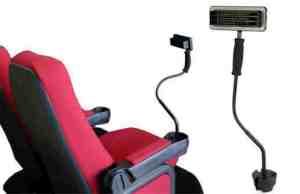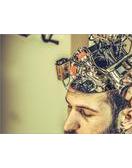Technology has made settling in on the couch watching a good movie inviting for those with hearing loss. But honestly, some films are just meant to be enjoyed on the big screen. Gary's hearing loss continues to worsen. He no longer understands the dialog on television without closed-captioning enabled. Background noises, the music or the tone of an actors voice is a muddle.
We owned a restaurant for ten years. The only days we closed for many years were Thanksgiving, Christmas Eve and Christmas. Christmas Eve was spent shopping. When Christmas arrived we were exhausted; we began a family tradition of having Chinese for lunch and going to the movies. A day-long film festival. The tradition continued long after the restaurant became a memory.
When Gary started wearing hearing aids, sounds were clear and conversation enjoyable. It went downhill after the first year. He was fitted with his second pair this past spring. A new hearing test showed significantly lower thresholds. He is completely deaf in the higher tones and considered profoundly impaired in the lower end. The information tells us nerve degeneration in Superficial Siderosis is a slow process. Two years feels rather speedy for such a profound change.
Gary sat through Star Wars: The Force Awakens, but he missed more than half the dialog. We tried another movie a few months later; he dozed off. For the first time in 25 years, we skipped our film fest this past Christmas. We thought we'd said goodbye to movie theaters forever.
In the not too distant past, very few shows offered workable hearing assistive devices for people with sensorineural hearing loss. When you are deaf to specific tones bulky headphones aren't helpful. Forget fancy closed-captioning glasses if you suffer from nystagmus. Somehow we missed the news about the improved CaptiView closed-captioning device.
Something Old Something New
I came across an article telling how Dolby purchased the CaptiView system from Doremi Cinema. Old reviews on the functionality of early versions of CaptiView and were far from stellar. Dolby Digital understood hearing impaired movie audiences and improved the system. Dolby® CaptiView was born.
I checked with local theaters and found that Cinemark and AMC theaters both offer hearing impaired assistive devices. The new King Kong had just hit the big screen, so what better time to try out this gizmo.
Bring On The Popcorn
We decided on a daytime trip, hoping it might be less crowded and noisy for our first venture back. Gary asked a concession employee where he could pick up his display. The manager walked him through a simple check out procedure. You give your drivers license or ID to the office to hold, and they give you your device after they set it to the movie you are going to see. It's crucial the theater employee knows which movie because if the software isn't reset you'll enjoy the dialog from an adjoining theater.
The captioning display will be sent via a wireless signal to a display screen mounted on a bendable support arm. You fit the end of the arm into your seat cup holder, so you aren't restricted to where to sit. The design could stand some improvement on this feature, but with minimal work, you can position the screen right in your line of vision.

He adjusted his hearing aids, so the loud booms weren't unbearable. The closed-captioning was able to fill in the dialog gaps when it was impossible for him to understand. Gary was able to enjoy the movie.We'd say our experiment was a success so don't look for us this Christmas. We'll be at the movies.

